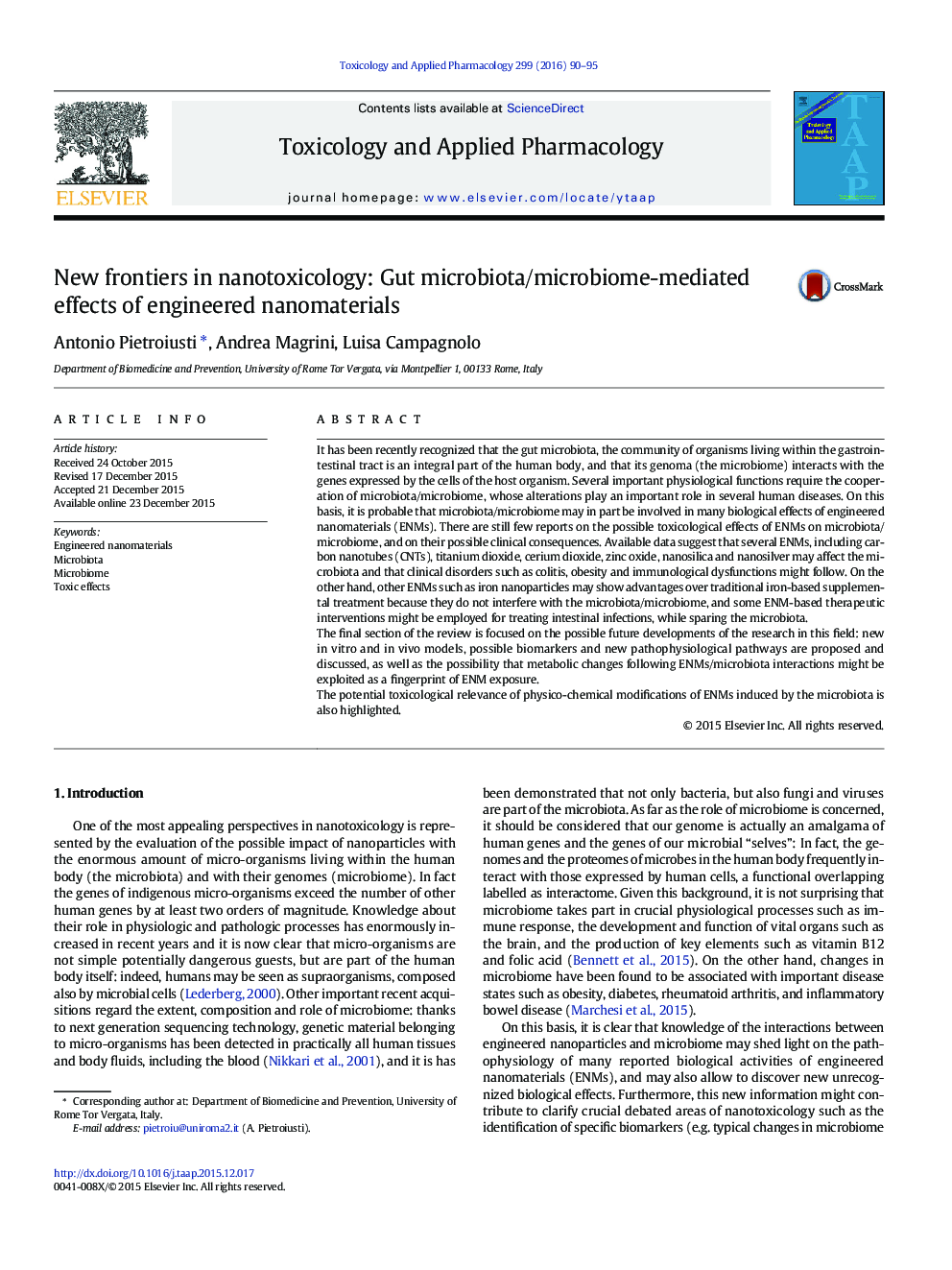| کد مقاله | کد نشریه | سال انتشار | مقاله انگلیسی | نسخه تمام متن |
|---|---|---|---|---|
| 2568122 | 1561163 | 2016 | 6 صفحه PDF | دانلود رایگان |
• Interactions between ENMs and microbiota are largely unexplored.
• Microbiota probably mediates several ENMs' biological actions.
• ENMs/microbiota interactions might provide new specific biomarkers.
• ENM/microbiota interactions may be exploited in nanomedicine.
• We propose new experimental models and new targets for ENMs/microbiota.
It has been recently recognized that the gut microbiota, the community of organisms living within the gastrointestinal tract is an integral part of the human body, and that its genoma (the microbiome) interacts with the genes expressed by the cells of the host organism. Several important physiological functions require the cooperation of microbiota/microbiome, whose alterations play an important role in several human diseases. On this basis, it is probable that microbiota/microbiome may in part be involved in many biological effects of engineered nanomaterials (ENMs). There are still few reports on the possible toxicological effects of ENMs on microbiota/microbiome, and on their possible clinical consequences. Available data suggest that several ENMs, including carbon nanotubes (CNTs), titanium dioxide, cerium dioxide, zinc oxide, nanosilica and nanosilver may affect the microbiota and that clinical disorders such as colitis, obesity and immunological dysfunctions might follow. On the other hand, other ENMs such as iron nanoparticles may show advantages over traditional iron-based supplemental treatment because they do not interfere with the microbiota/microbiome, and some ENM-based therapeutic interventions might be employed for treating intestinal infections, while sparing the microbiota.The final section of the review is focused on the possible future developments of the research in this field: new in vitro and in vivo models, possible biomarkers and new pathophysiological pathways are proposed and discussed, as well as the possibility that metabolic changes following ENMs/microbiota interactions might be exploited as a fingerprint of ENM exposure.The potential toxicological relevance of physico-chemical modifications of ENMs induced by the microbiota is also highlighted.
Journal: Toxicology and Applied Pharmacology - Volume 299, 15 May 2016, Pages 90–95
